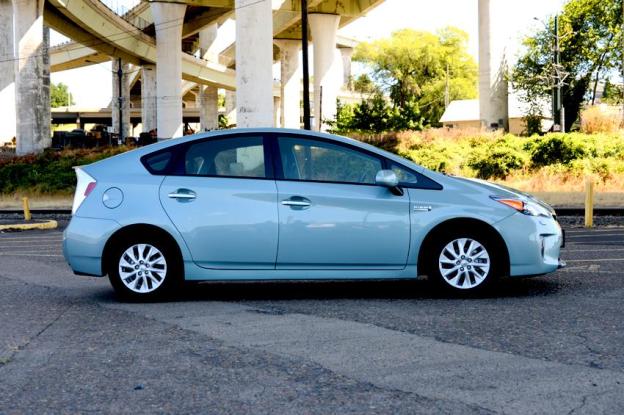 Since it took on its current shape for the 2004 model year, the Toyota Prius has become a familiar site on the world’s roads. However, that might change soon. Toyota is considering major changes to the next generation Prius’ styling to widen its appeal.
Since it took on its current shape for the 2004 model year, the Toyota Prius has become a familiar site on the world’s roads. However, that might change soon. Toyota is considering major changes to the next generation Prius’ styling to widen its appeal.
“There’s an undercurrent among most people that they’re ready for a new Prius look,” Chris Hostetter, Toyota’s U.S. group vice president for strategic planning,” told Bloomberg.
Toyota hasn’t made a final decision on styling for the next generation Prius which, according to Hostetter, will debut in “a little more than a year,” but it is looking at several options. The new hybrid could be an evolution of the current Prius’ styling, or something completely different.
The Prius definitely has a distinctive shape, but it’s not one that appeals to everyone. After two generations, Toyota may also need a new look to attract more attention, and potential sales.
A redesigned Prius could also be part of a larger movement at the world’s second largest carmaker. Toyota CEO Akio Toyoda has been encouraging his company to make cars that are more exciting and, from the sporty Scion FR-S to the less boring new Avalon and Lexus models, Toyota is moving in that direction.
However, changing the Prius presents a couple of problems for Toyota. The hybrid’s wedge shape was not designed to look good, it was designed for maximum aerodynamic efficiency. The steeply raked windshield, blunt rear end (designers call it a Kamm tail), and the creases at all four corners of the current model combine to make the Prius one of the slipperiest cars on the road and, consequently, one of the most fuel efficient.
A new shape could also harm the Prius’ hard-won brand recognition. A restyling might attract new buyers, but it could also alienate loyal ones, or make the new car less recognizably a Prius.
Luckily, the current family of Priuses is holding the line. Global sales for the four models (hatchback, plug-in, Prius v wagon, and Prius c compact) totaled 691,281 through September. That makes 2012 a record year for the Prius, although in its last record year (2010) only the basic hatchback was on sale.
The competition is catching up too. Ford sold 3,182 of its new C-Max hybrid wagons last month, compared to 2,769 of the comparable Prius v.
Whatever it ends up looking like, the next Prius will also ride on a new modular platform that will be used on other Toyota vehicles. Changes to the company’s Hybrid Synergy Drive system are also likely, although the company is not saying whether the next Prius will switch from nickel metal-hydride batteries to the lithium ion batteries used by competitiors.
Big changes may be coming, but Toyota has equally big plans for the Prius. The company wants to continue expanding the Prius “family” (Prius convertible, anyone?) and says the hybrid might outsell its stalwart Camry and Corolla by the end of the decade.


